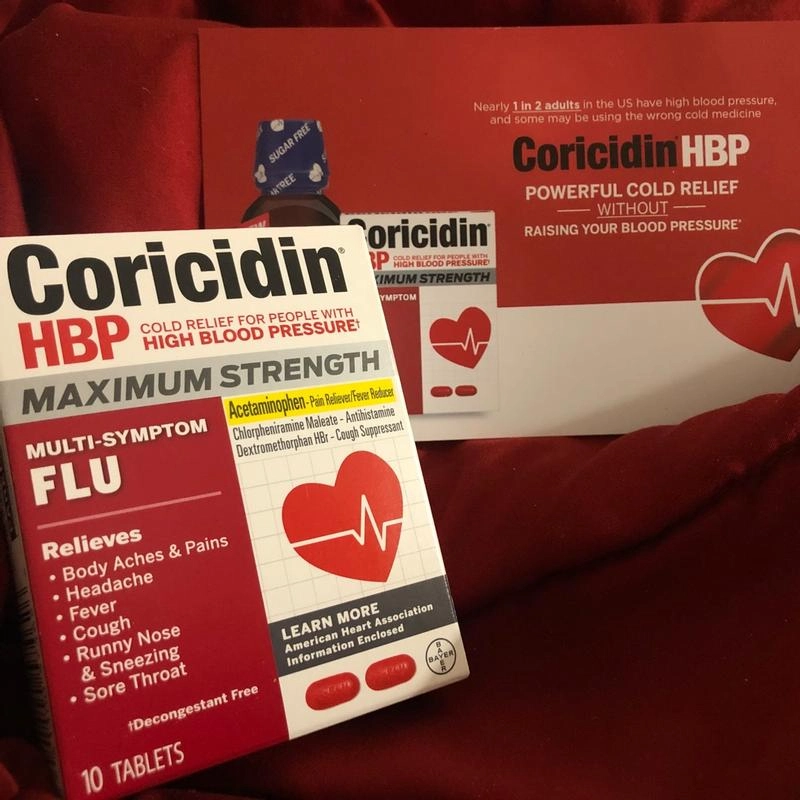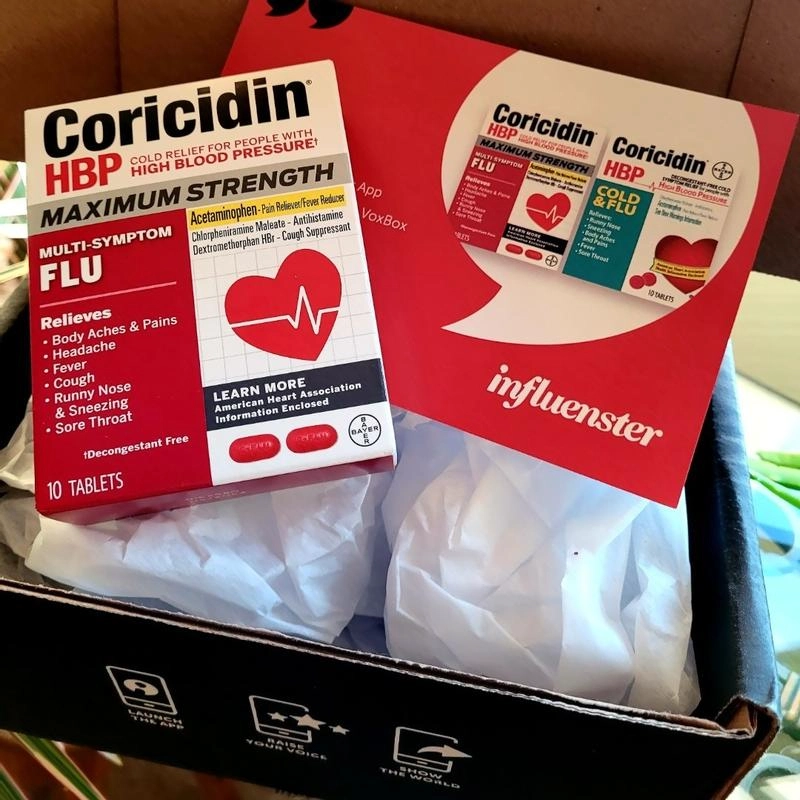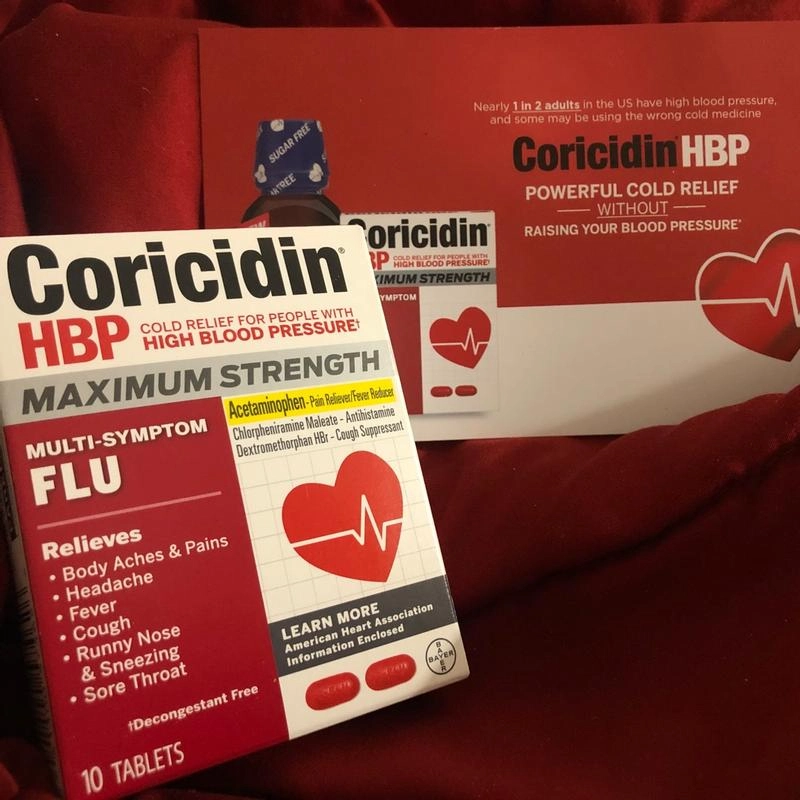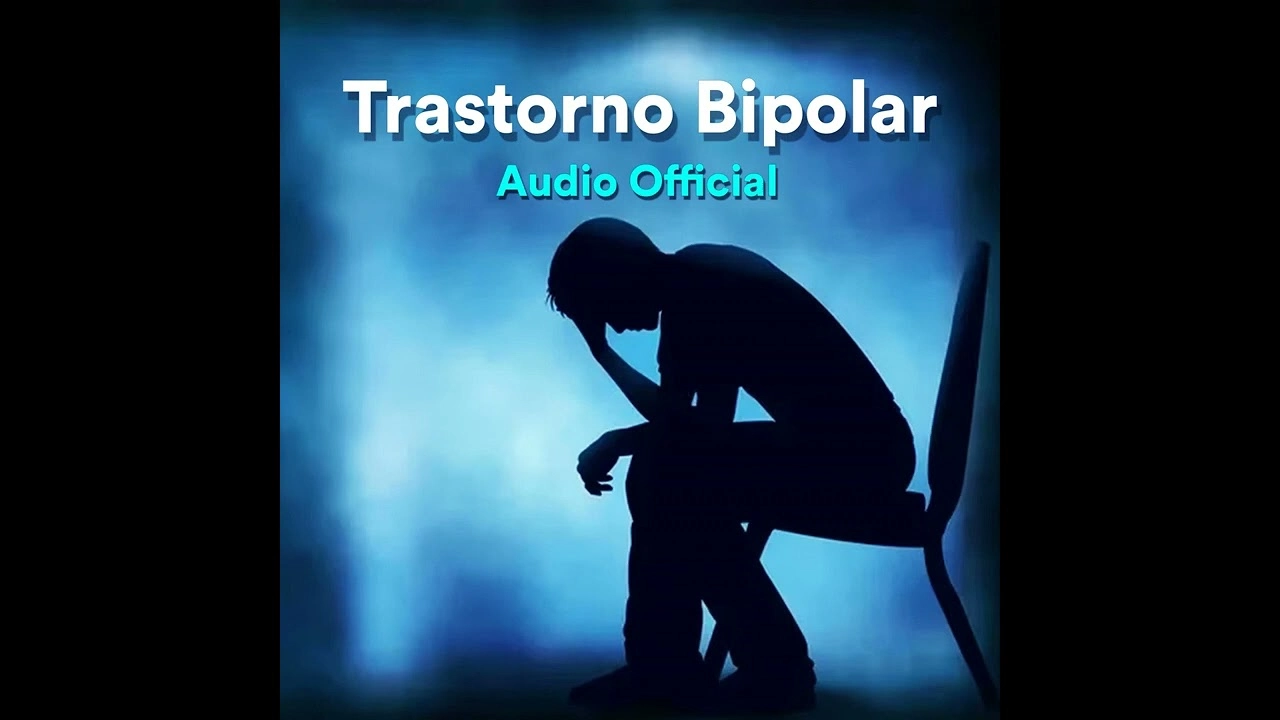Coricidin High Blood Pressure Dosage: Not all medications are created equal for cold and flu symptom management in individuals with high blood pressure. For over-the-counter use, Coricidin HBP, a line of cold and allergy medications for people with hypertension, is a common choice.

In this post, we’ll be looking at everything there is to learn about Coricidin High Blood Pressure dosage, its components, safety policies, adverse effects, and comparisons with other cold and flu remedies.
Coricidin High Blood Pressure Dosage
A brand of over-the-counter medications, Coricidin HBP, is made to ease cold and flu symptoms without elevating blood pressure. Many standard cold medicines have decongestants such as pseudoephedrine or phenylephrine, which can tighten blood vessels and increase blood pressure. Coricidin HBP avoids both of these ingredients, making it safer for hypertensive individuals.
Novartis markets several varieties of Coricidin HBP, each helping to treat specific symptoms, such as cough, chest congestion, runny nose, or allergies. Popular formulas include:
• Coricidin HBP Cough & Cold
• Coricidin HBP Chest Congestion & Cough
• Coricidin HBP Maximum Strength Flu
• Coricidin HBP Cold & Flu
• Coricidin HBP Day & Night Multi-Symptom Cold
Coricidin HBP Key Ingredients
As a result, each Coricidin HBP product contains various active ingredients for its specific use. Common ingredients include:
• Acetaminophen: Pain reliever and fever reducer.
• Chlorpheniramine maleate: An antihistamine used to relieve sneezing, runny nose, and watery eyes.
• Dextromethorphan HBr: Cough suppressant
• Guaifenesin: A medication that loosens mucus (an expectorant).
• Diphenhydramine: Another antihistamine seen in nighttime formulas.
• Doxylamine succinate: A sedating antihistamine that’s also used as a sleep aid.
Important note: The Coricidin HBP formulas have no decongestant ingredients, making them better for people who have high blood pressure.
Recommended Dosage Guidelines
Coricidin HBP Cough & Cold
Active ingredient: Dextromethorphan HBr 10 mg, Chlorpheniramine maleate 4 mg
Dosing: 2 tablets 6 hours apart. Maximum: 8 tablets/24 hours
Coricidin HBP Chest Congestion & Cough
Drug Facts Active Ingredients: Dextromethorphan HBr 10 mg, Guaifenesin 200 mg
Dosage: 2 tablets every 4 hours. Not to be taken more than 12 tablets in 24 hours.
Coricidin HBP Maximum Strength Flu
Drug Facts Active ingredients (in each tablet) Purpose Acetaminophen 500 mg Pain reliever/fever reducer Dextromethorphan HBr 10 mg Cough suppressant Chlorpheniramine maleate 2 mg Antihistamine
2 tablets every 6 hours. Do not take more than 8 tablets in 24 hours.
Coricidin HBP Day & Night Multi-Symptom Cold
Day Tablets: Acetaminophen 325 mg, Dextromethorphan HBr 10 mg
Dosage: At least 2 of the daytime tablets every 4 hours. Do not take more than 8 daytime tablets in 24 hours.
Night Tablets: Acetaminophen 325 mg, Dextromethorphan HBr 10 mg, Doxylamine succinate 6.25 mg
Dosage: 2 PM tabs at bedtime. Do not take more than 2 nighttime tablets per 24 hours.
Coricidin HBP Cold & Flu
Active ingredients: Acetaminophen 500 mg, Chlorpheniramine maleate 4 mg
Dosage: Two tablets every four to six hours. Do not take more than 8 tablets in a 24-hour period.
Adjustment of Dosage in Special Populations
For Seniors
Older adults may also be more sensitive to antihistamines and sedating constituents such as diphenhydramine or doxylamine. It’s best to start at the lower end of the dosage range or speak with a health care provider before using.
For People with Liver Disease
Several Coricidin HBP formulations include acetaminophen, which can be damaging to the liver in large quantities. The maximum safe amount of acetaminophen to take in a 24-hour period is 3,000 to 4,000 mg, and for people with liver problems, it is lower.
For Individuals Taking Multiple Medications
Always check for drug interactions, especially if you are taking medications like:
• MAO inhibitors
• Antidepressants
• Other pain relievers
• Sedatives or alcohol
Ask your pharmacist or doctor before using.
Is It Safe to Take Coricidin HBP With Blood Pressure?
Coricidin HBP is usually safe for people with high blood pressure, since it does not contain decongestants. But several ingredients, particularly antihistamines, can still mildly raise blood pressure or interact with other medications.
Key points:
• Whenever taking a new medication, be sure to keep checking your blood pressure.
• Do not use Coricidin HBP in place of another drug to control your hypertension.
• Do not exceed the dosage recommended to prevent side effects.
Side Effects of Coricidin HBP
Although Coricidin HBP is usually well-tolerated, it may cause side effects:
Common Side Effects:
• Drowsiness or dizziness
• Dry mouth, nose, or throat
• Nausea or upset stomach
• Headache
Uncommon but Serious Side Effects:
• Liver damage (due to too much acetaminophen)
• Then followed by severe allergic reactions (rash, itching, swelling)
• Disorientation or hallucinations (in older adults or with high doses)
If you experience any of these symptoms, stop using the product and obtain medical help right away.
What to Do if You Overdose
An overdose of Coricidin HBP, particularly due to acetaminophen, can be dangerous or fatal. Signs of overdose include:
• Severe drowsiness
• Confusion
• Slow or shallow breathing
• Symptoms of liver failure (yellow skin or eyes, dark urine)
Immediate Actions:
• Call poison control (1-800-222-1222 in the U.S)
• If you are really frightened, take yourself to the closest ER
• Don’t wait for symptoms to show up
Potentially Dangerous Drug Interactions
Certain Coricidin HBP formulas can react with:
• MAO inhibitors (linezolid, selegiline, etc)
• Sedatives and alcohol: Increase drowsiness
• Blood thinners (such as warfarin): May raise bleeding risk when used together with acetaminophen.
• Other cold/flu medicines: Risk of doubling active ingredients
Always review labels and speak to a health care provider.
Hypertensive Patients: Potential Alternatives To Coricidin HBP
If Coricidin HBP is not effective for you, or if you’d rather use other options, consider:
• Saline nasal sprays: OK to help clear congestion
• Steam inhalation: Good for loosening sinus pressure and mucus
• Honey and lemon: A home remedy for coughs
• Tylenol (acetaminophen): For fever or pain, without an antihistamine
Never use a cold and flu medication that contains pseudoephedrine or phenylephrine.
How to Safely Use Coricidin HBP

Follow dosage instructions precisely to the letter—never take more than advised.
Watch for duplications with other medicines you take (particularly acetaminophen).
Especially nighttime formulas, do not drink alcohol with Coricidin HBP.
Properly store in a cool, dry place out of reach of children.
Use only when necessary — avoid regular or long-term use without consulting a physician.
People Also Ask for Common Myths About Coricidin HBP
Myth No. 1: “It’s 100 percent safe for everyone with high blood pressure.”
Unlike decongestant-containing over-the-counter medications, Coricidin HBP is less likely to cause such destructive drug interactions, but these medications still have potential side effects and can interact with certain pre-existing conditions.
Myth 2: “You can take as much as you need because it’s over the counter.”
Fact: High doses can lead to liver damage, sedation, and other serious problems.
Myth 3: “All cold medications are alike.”
Fact: Many decongestants may be harmful to people with hypertension.
When to See a Doctor
You will need to contact a health care provider if:
• Symptoms last longer than 7–10 days
• Fever lasts longer than 3 days
• You have side effects or allergic reactions
• You take several medications or have long-term health problems
Final Thoughts
Coricidin HBP is one of the most commonly recommended and successful over-the-counter medications to help with cold and flu symptoms for someone with high blood pressure. Yet dosage needs to be closely monitored, and users must always be on the lookout for possible interactions and side effects. As always, if in doubt, speak to a healthcare provider, particularly if you have other medical conditions or are on other medications.







